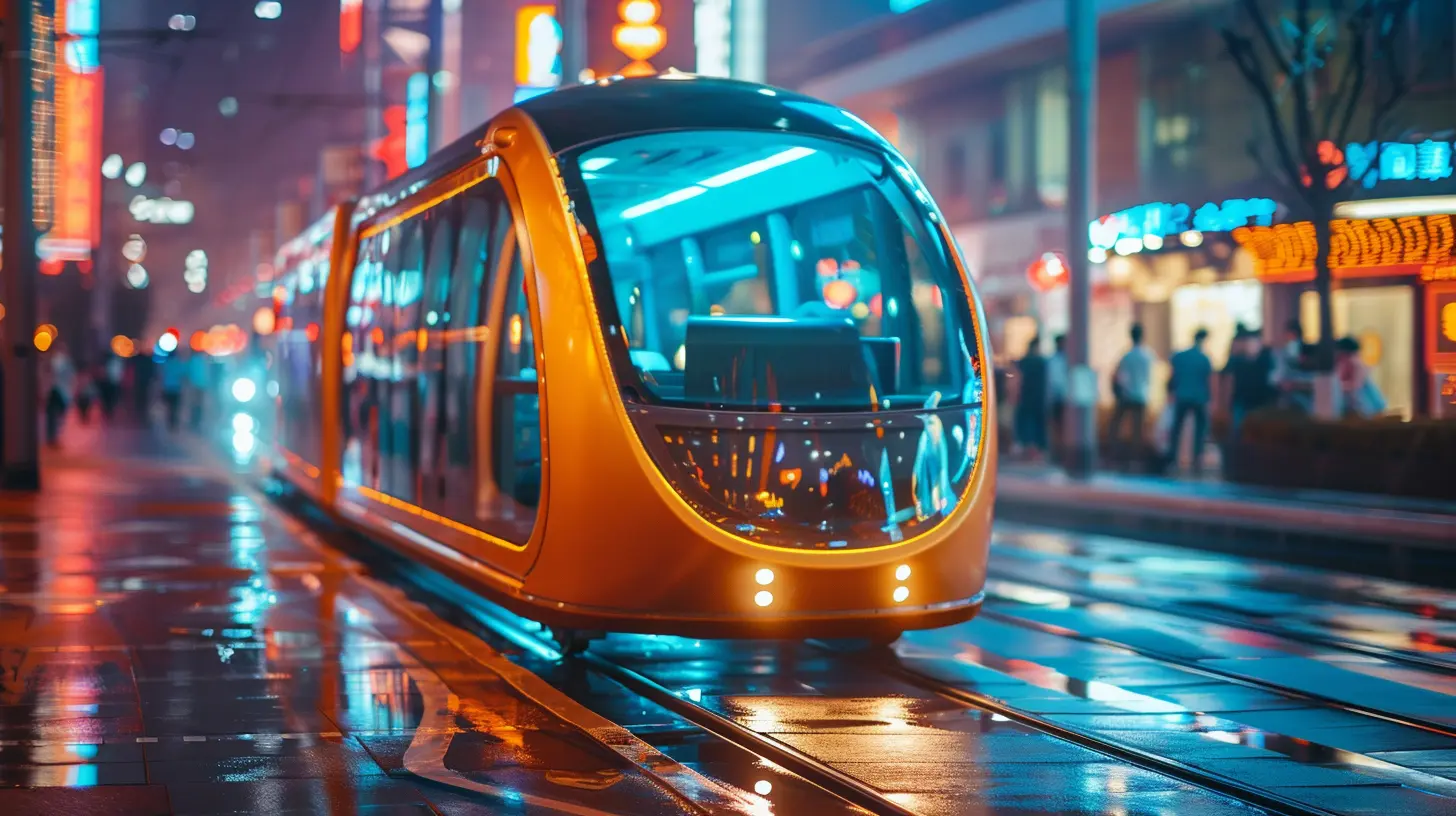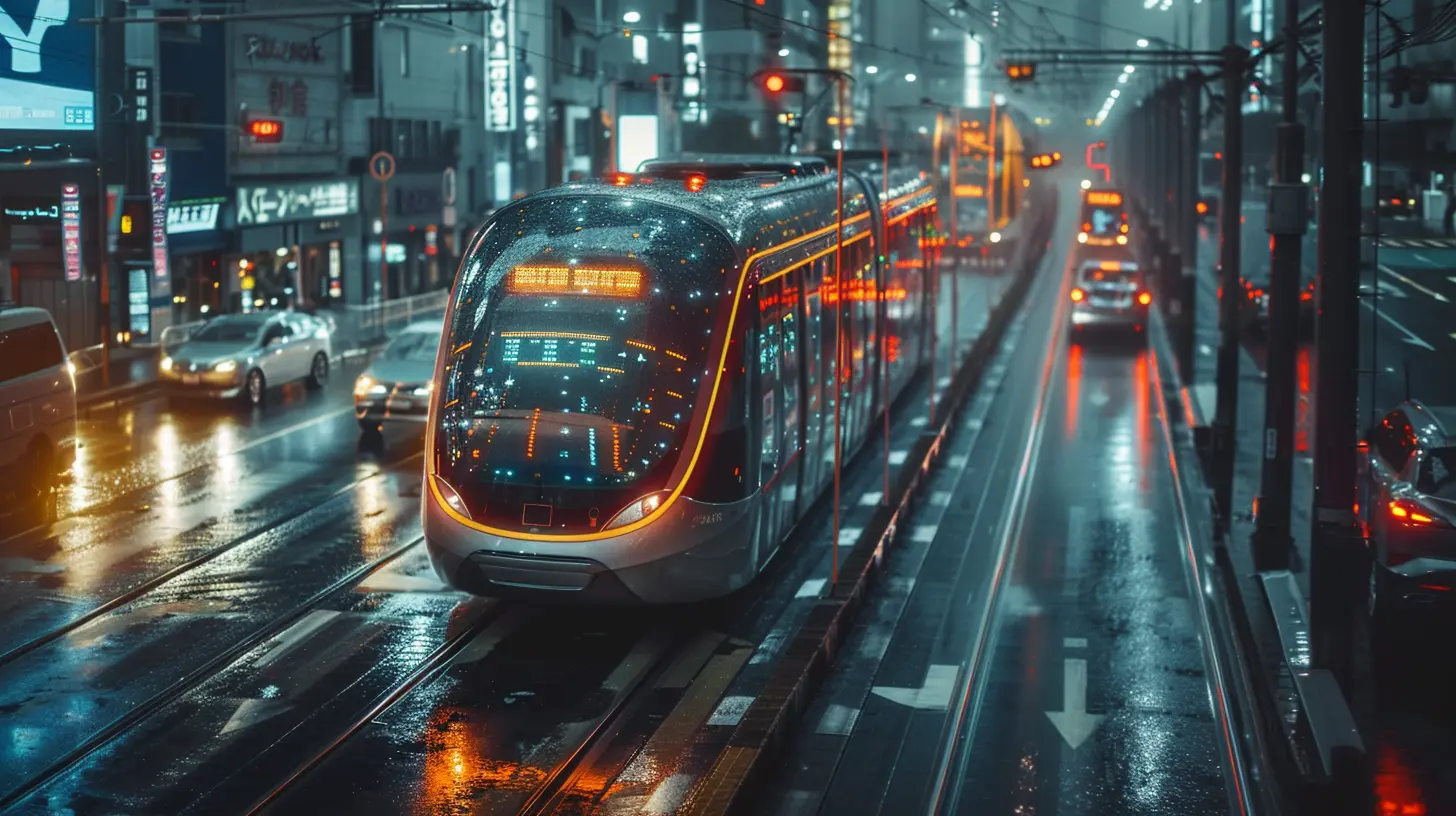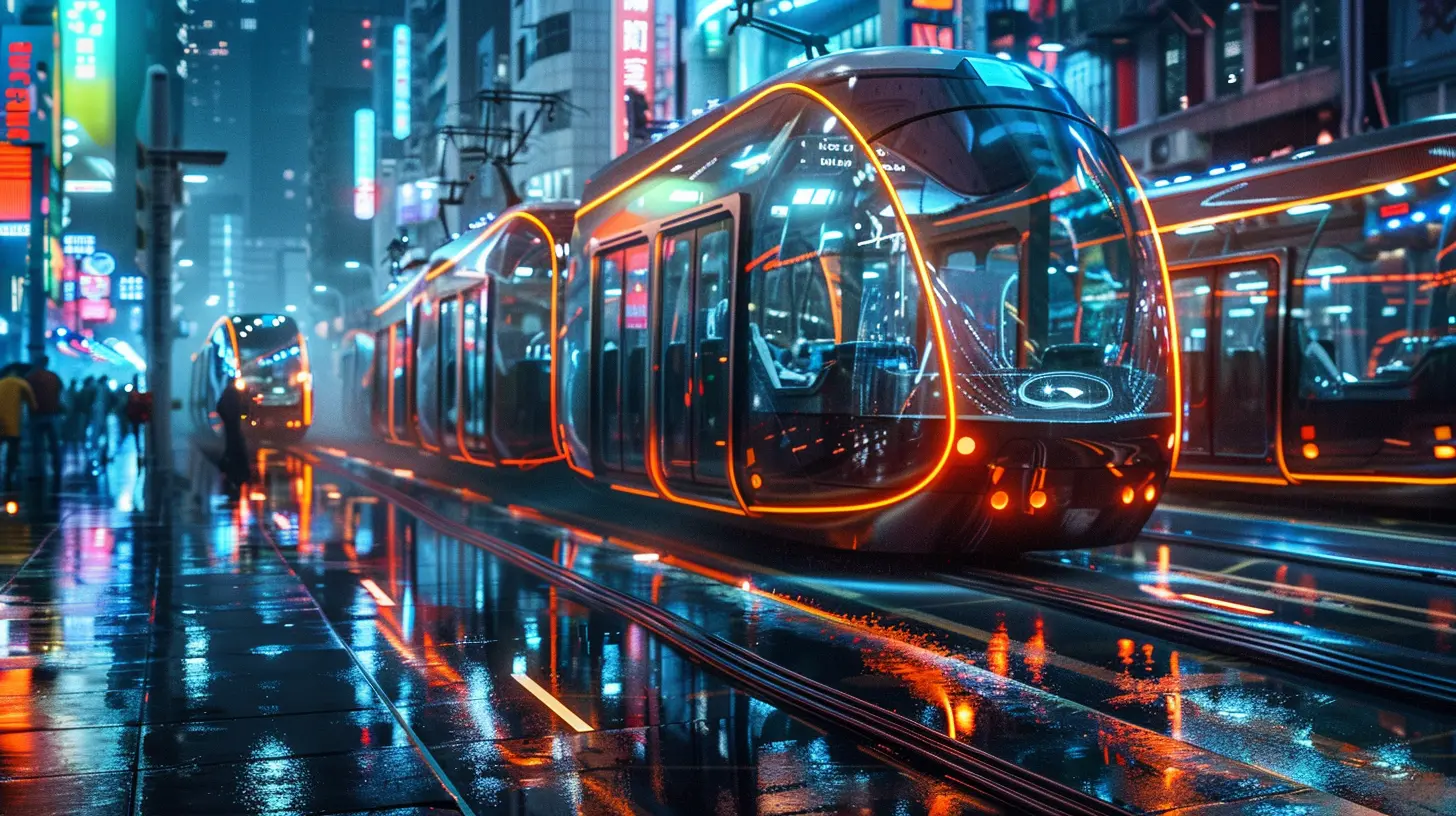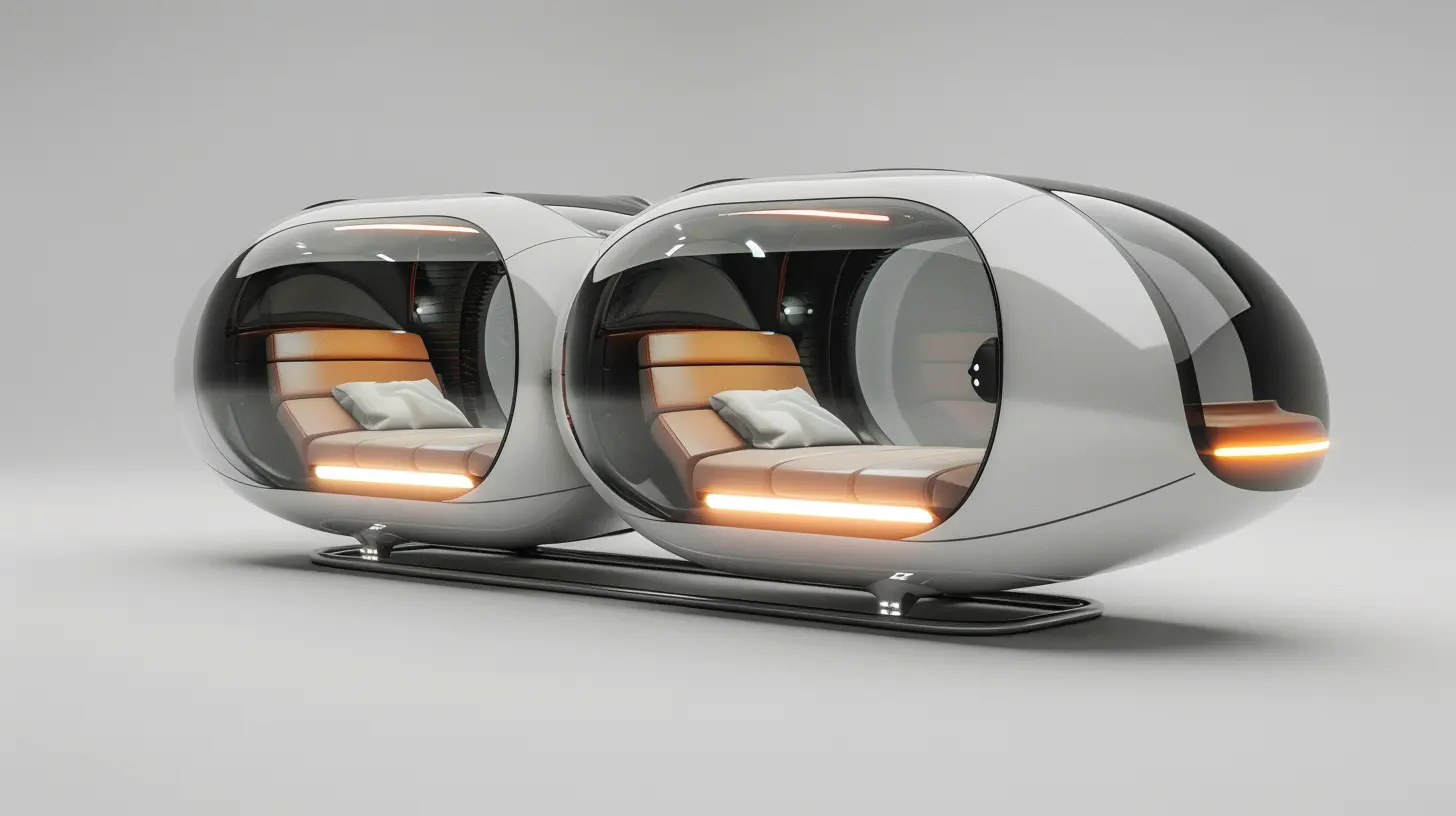The Future of Autonomous Vehicles in Public Transportation
15 October 2025
Public transportation is something we often take for granted, right? We hop on buses, catch subways, or maybe even grab a train without really thinking about the logistics behind the scenes. But what if I told you that the humble bus or train as we know it could soon be driven by, well, no one? It’s not science fiction anymore. The world of autonomous vehicles is no longer just about sleek Teslas or delivery drones—it’s about public transportation too. And the implications? They’re huge.

What Exactly Are Autonomous Vehicles?
Before we dive into how they’ll change public transportation, let’s clarify what we mean by "autonomous vehicles." Simply put, these are cars, buses, or other forms of transport that can drive themselves without human intervention. They rely on a combination of sensors, cameras, radar, GPS, and advanced algorithms to navigate roads, avoid obstacles, and follow traffic laws.Sounds like something from a futuristic movie, doesn’t it? But it’s happening right now. Companies like Waymo, Tesla, and Uber have already made significant strides in the autonomous vehicle space, and many governments are starting to take notice, especially when it comes to public transit.

The Current State of Public Transportation
Public transportation is the backbone of many urban areas. Millions of people rely on buses, subways, and trains every day to commute to work, school, or just to get around. However, public transit systems are far from perfect. Let’s be honest: delays are common, overcrowding is frustrating, and in some cases, safety is a concern. Not to mention that many public transport vehicles still rely on fossil fuels, contributing to environmental issues.That’s where autonomous vehicles come in. They have the potential to address many of these problems, offering a cleaner, safer, and more efficient mode of public transportation. But how, exactly?

How Autonomous Vehicles Could Transform Public Transit
1. Reduced Human Error and Increased Safety
Did you know that around 90% of traffic accidents are caused by human error? Whether it's distracted driving, speeding, or just plain old bad judgment, human drivers are prone to mistakes. Autonomous vehicles, on the other hand, don’t get tired. They don’t text and drive. They don’t have bad days.By removing human error from the equation, autonomous public transport could drastically reduce the number of accidents on the road. Imagine buses that can safely navigate through busy city streets without the risk of a driver becoming fatigued or distracted. That’s a game-changer.
2. Improved Efficiency
Let’s face it—waiting for a bus that never seems to arrive on time can be one of the most frustrating experiences. With autonomous vehicles, transportation systems can become far more efficient. These vehicles could be programmed to follow more accurate schedules, adjusting in real-time to traffic conditions, weather, or even passenger demand.Think of it like how ride-sharing apps like Uber or Lyft match drivers with passengers dynamically. Autonomous buses could do something similar, optimizing routes and schedules as needed, ensuring that you're not left waiting at a bus stop for 30 minutes, wondering if you should just call an Uber.
3. Lower Operational Costs
Operating a public transportation system isn't cheap. One of the biggest expenses? Paying drivers. With autonomous vehicles, that cost is significantly reduced. While there will still be maintenance and monitoring costs, the absence of human drivers can save money for transportation authorities.And what happens when costs go down? Potentially, those savings could be passed on to commuters in the form of lower fares. Imagine being able to commute across a city at a fraction of the current cost—sounds pretty appealing, doesn’t it?
4. Accessible Transportation for All
One of the most exciting aspects of autonomous vehicles is their potential to make public transportation more accessible. People with disabilities or those who are unable to drive could benefit greatly from autonomous transit systems. Autonomous buses could be designed with features that make them more user-friendly for everyone, regardless of physical ability.It's not just about accessibility either. Autonomous public transportation could provide round-the-clock service, which is especially beneficial for people who work odd hours or live in areas where public transit isn’t currently available 24/7.
5. Environmental Impact
Many cities are pushing for greener transportation options, and autonomous vehicles could play a significant role in reducing our carbon footprint. Electric autonomous buses and trains are already being tested in some cities, and the results are promising.Since these vehicles could be programmed to drive optimally (e.g., avoiding sudden stops, minimizing idling, and using the most efficient routes), they could help reduce emissions and make public transportation a more eco-friendly option. Plus, if more people opt for autonomous public transit over driving their own cars, we could see a significant reduction in overall traffic emissions.

Challenges and Concerns of Autonomous Public Transportation
Of course, like any major technological shift, there are some challenges and concerns that come with the introduction of autonomous vehicles in public transportation. Let’s explore a few.1. Safety Concerns
While the goal is to reduce accidents caused by human error, autonomous vehicles aren’t perfect. There have been some high-profile incidents involving self-driving cars, and the technology is still being tested and refined. Public trust in these systems needs to be established before people will feel comfortable hopping on a driverless bus.2. Job Displacement
One of the biggest concerns surrounding autonomous vehicles is the potential for job losses. Bus drivers, train operators, and other public transit employees could be at risk of losing their jobs. While automation has the potential to create new jobs (such as in vehicle maintenance and software management), the transition could be difficult for those whose livelihoods depend on driving.3. Regulatory and Legal Issues
Who’s responsible if an autonomous bus gets into an accident? Can you sue the software developer, or is it the transportation authority’s fault? These are the kinds of questions that governments and legal bodies will need to tackle as autonomous vehicles become more mainstream. The legal framework around autonomous public transportation is still very much a work in progress.4. Public Acceptance
Finally, there’s the issue of public acceptance. While many of us are excited by the prospect of self-driving cars, there are plenty of people who are skeptical or uncomfortable with the idea. It’s going to take time for the general population to fully trust autonomous public transportation systems.What's Happening Right Now?
So, where are we currently? Well, several cities around the world are already testing autonomous public transportation systems.In the U.S., cities like Las Vegas and Tampa have launched pilot programs featuring autonomous shuttles. Over in Europe, countries like Finland and France are also experimenting with driverless buses. China, never far behind when it comes to tech innovation, has already begun testing autonomous buses in multiple cities.
While we're still in the early stages, these pilot programs provide valuable data and insights that will help shape the future of autonomous public transportation.
What Does the Future Hold?
Looking ahead, it’s clear that autonomous vehicles have the potential to revolutionize public transportation. From improved efficiency and safety to reduced costs and environmental benefits, the possibilities are endless.However, it’s not going to happen overnight. The technology still needs to be refined, regulations need to be established, and public trust needs to be earned. But make no mistake—autonomous public transportation is coming, and it could completely change the way we move through our cities.
Imagine a world where you can step into a bus that drives itself, takes the fastest route, and runs on clean energy—all while you sit back, relax, and maybe even catch up on your favorite podcast. It might sound far-fetched now, but in a few decades, it could be the new normal.
So, are you ready for the future?
all images in this post were generated using AI tools
Category:
Emerging TechnologiesAuthor:

Kira Sanders
Discussion
rate this article
1 comments
Julia McGuffin
Emphasizing safety and infrastructure is crucial.
October 16, 2025 at 3:39 AM

Kira Sanders
Absolutely, safety and robust infrastructure are essential for the successful integration of autonomous vehicles in public transportation.


